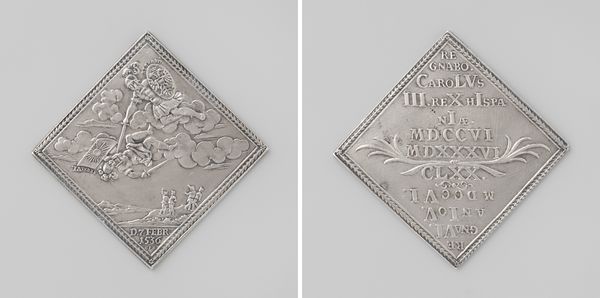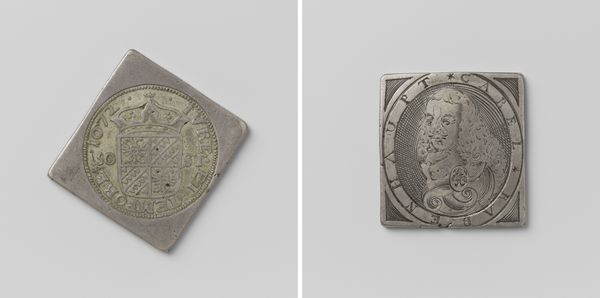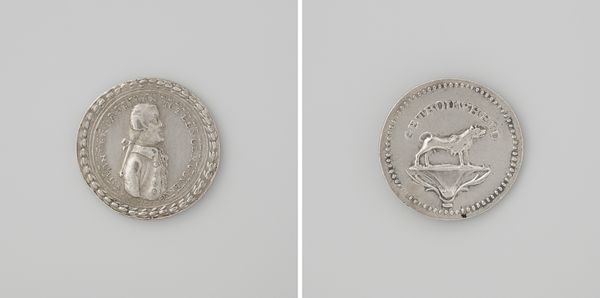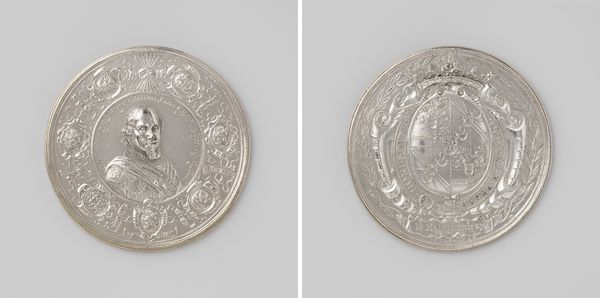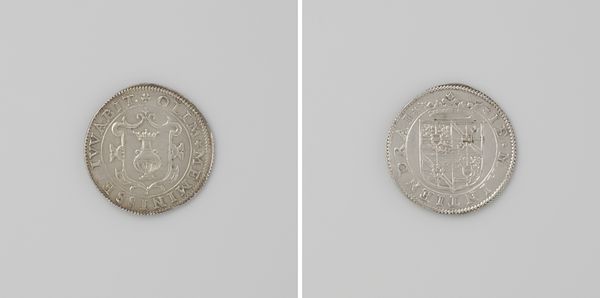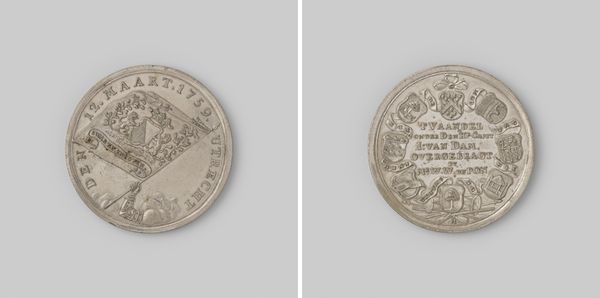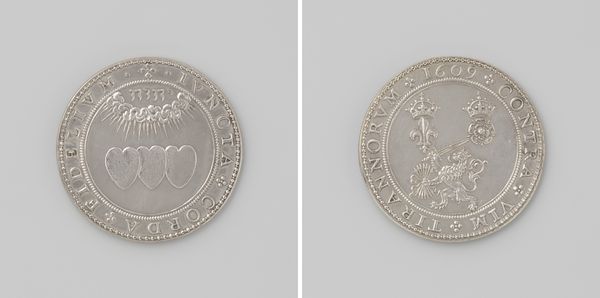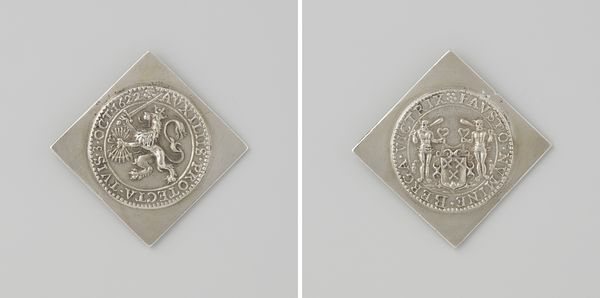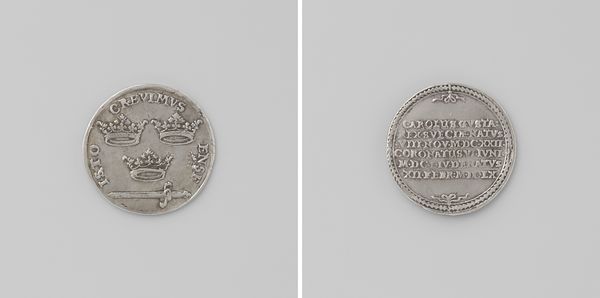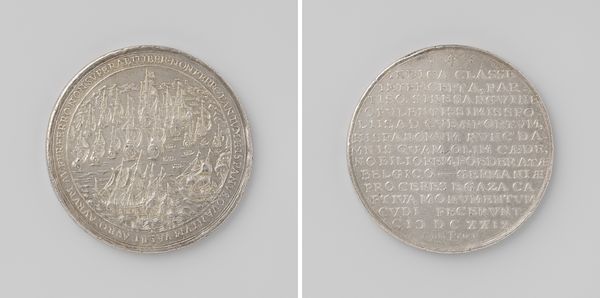
carving, metal, engraving
#
portrait
#
carving
#
baroque
#
metal
#
history-painting
#
engraving
Dimensions: length 2.8 cm, width 2.8 cm, weight 4.68 gr
Copyright: Rijks Museum: Open Domain
Editor: So this is a medal commemorating the Coronation of Frederik III of Denmark in 1648. It's anonymous and made of metal, possibly silver. The square shape is interesting... it kind of evokes a playing card or something. What do you make of this, knowing what you know about the art of that era? Curator: Well, let’s consider this object as a form of currency beyond its monetary value. Think about the labor involved in extracting and refining the metal, the crafting of the die, the striking of the medal itself. This isn't just about depicting power; it’s about the material assertion of power, isn't it? Who controlled access to the raw materials? Who possessed the technical skill to shape them? Editor: That's a good point. It represents a hierarchy of access. Was metal a standard for creating such medals at the time? Curator: Metal, especially silver or gold, was deliberately chosen. Think of its durability. The medal’s material inherently speaks of the perceived permanence and wealth of the monarchy. Engraving on metal also lends itself to mass production compared to sculpting marble. Editor: So, by choosing a material that lasts and can be easily replicated, Frederik is really ensuring his image will endure...almost like propaganda. Curator: Precisely! These medals weren't passively admired; they were circulated, exchanged, collected. The very act of owning or even handling it becomes a form of engagement with royal power. What is fascinating to consider is if commoners would have any access to these and in what quantity. How would that shape their perception of wealth or the royal family? Editor: This makes me realize how objects are rarely neutral. They are carriers of labor and power structures! Curator: Exactly. Every choice, from material to form, represents embedded cultural and economic values, which we must decipher.
Comments
No comments
Be the first to comment and join the conversation on the ultimate creative platform.
